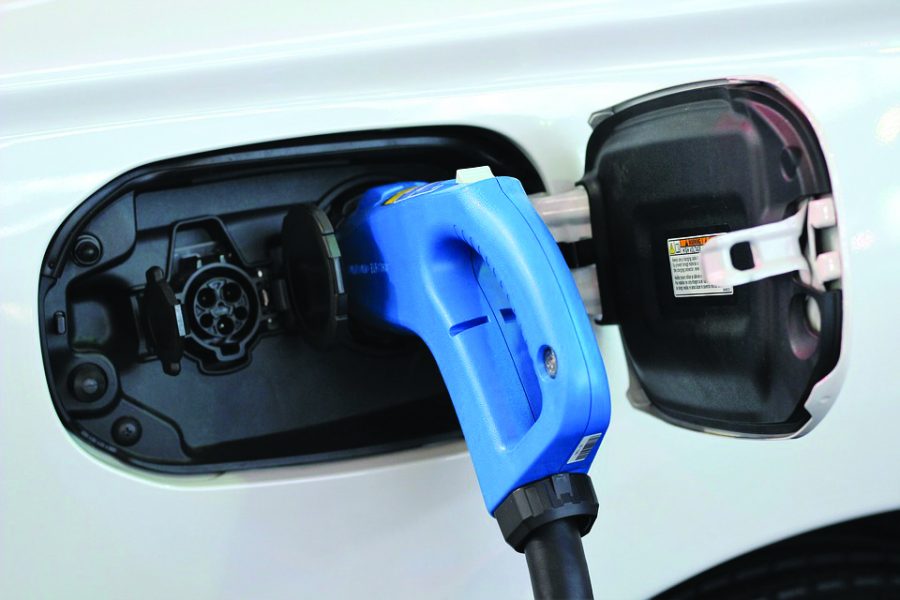Electric vehicles are lowering the carbon emissions placed into our environment.
With environmentalism becoming more prevalent across the United States, electric vehicles (EVs) are gaining traction as one of the best ways to combat carbon emissions. While it seems to be common knowledge that EVs are better for our environment, what makes them cleaner than gasoline-fueled cars? How much does an EV reduce your carbon footprint?
In 2015, the Union of Concerned Scientists (UCS) released a two-year long study about EVs. They debunked the myth that the manufacturing of EV batteries equals driving a gasoline powered car for eight years. In fact, the UCS discovered that the batteries “generate half the emissions of the average comparable gasoline car.”
The UCS also shared their discoveries in the manufacturing of both EVs and gasoline-fueled cars. According to the UCS’s analysis, EVs cause more emissions in their manufacturing, ranging from 15-68 percent more than gasoline cars. But once the production is over, the difference becomes apparent.
EVs reconcile their damage “within 18 months of driving,” their emissions well below their gasoline counterparts.
This difference becomes especially apparent in rural areas, where cars are a necessity. According to UCS’s interactive data chart, the latest Tesla model would only produce 141 grams of CO2 per mile at UTSA’s main campus, small compared to a standard gasoline vehicle with 381 grams of CO2 emissions per mile. According to the U.S. Department of Transportation, the average American drives about 1,000 miles per month. After accumulating the emissions, the gasoline-fueled vehicle produces an extra 240,000 grams of CO2 per mile. It would take an EV a little under two months to make up this startling difference.
The production of electricity is another part of an EVs carbon footprint. Even though most cities use coal to produce their electricity, EVs still have a “53 percent overall reduction” in emissions compared to gasoline cars. As cities begin to turn more towards renewable energy, the carbon footprint of EVs would decrease even more.
Tesla, the most popular of EVs, goes the extra mile when reusing and recycling their batteries. Throughout the years, Tesla has steadily developed their recycling techniques. According to Forbes, the current recycling process recovers “70 percent of the carbon.” Tesla described their semi-closed loop system of recycling, highlighting each detail of the batteries makeup and where each part goes. According to Tesla, plastics are reprocessed, and lead is repurified and reused to make more batteries. As recycling methods advance, Tesla aims to have a fully-closed loop system.
Vehicle emissions make up a large part of greenhouse gases and it is one that we can begin to combat with technological innovations. EVs are said to be the “car of the future,” and after looking at the facts and figures, that motto proves true. As EVs advance in their recycling and repurposing methods, their carbon footprint could become miniscule compared to what it is today.








